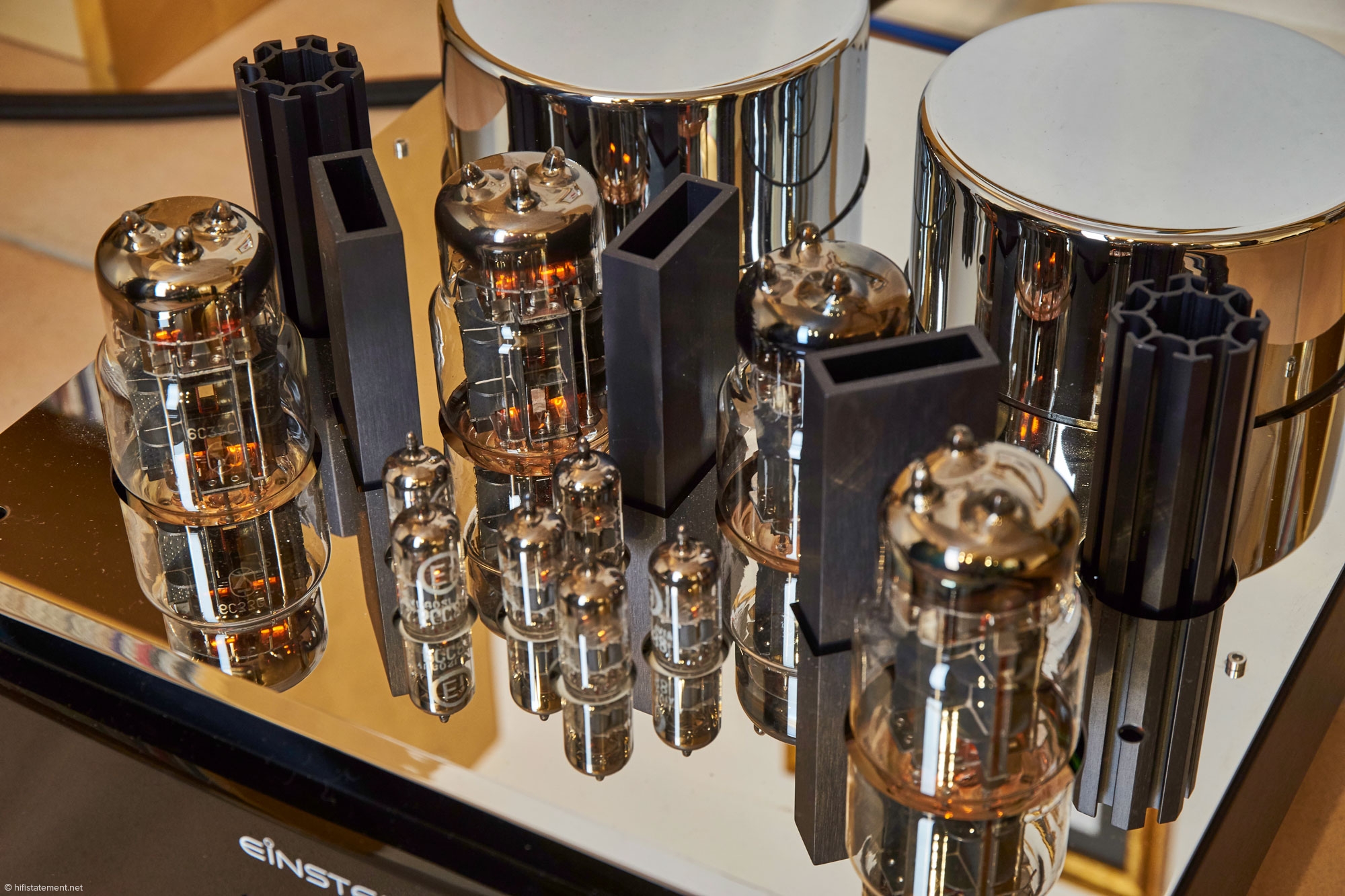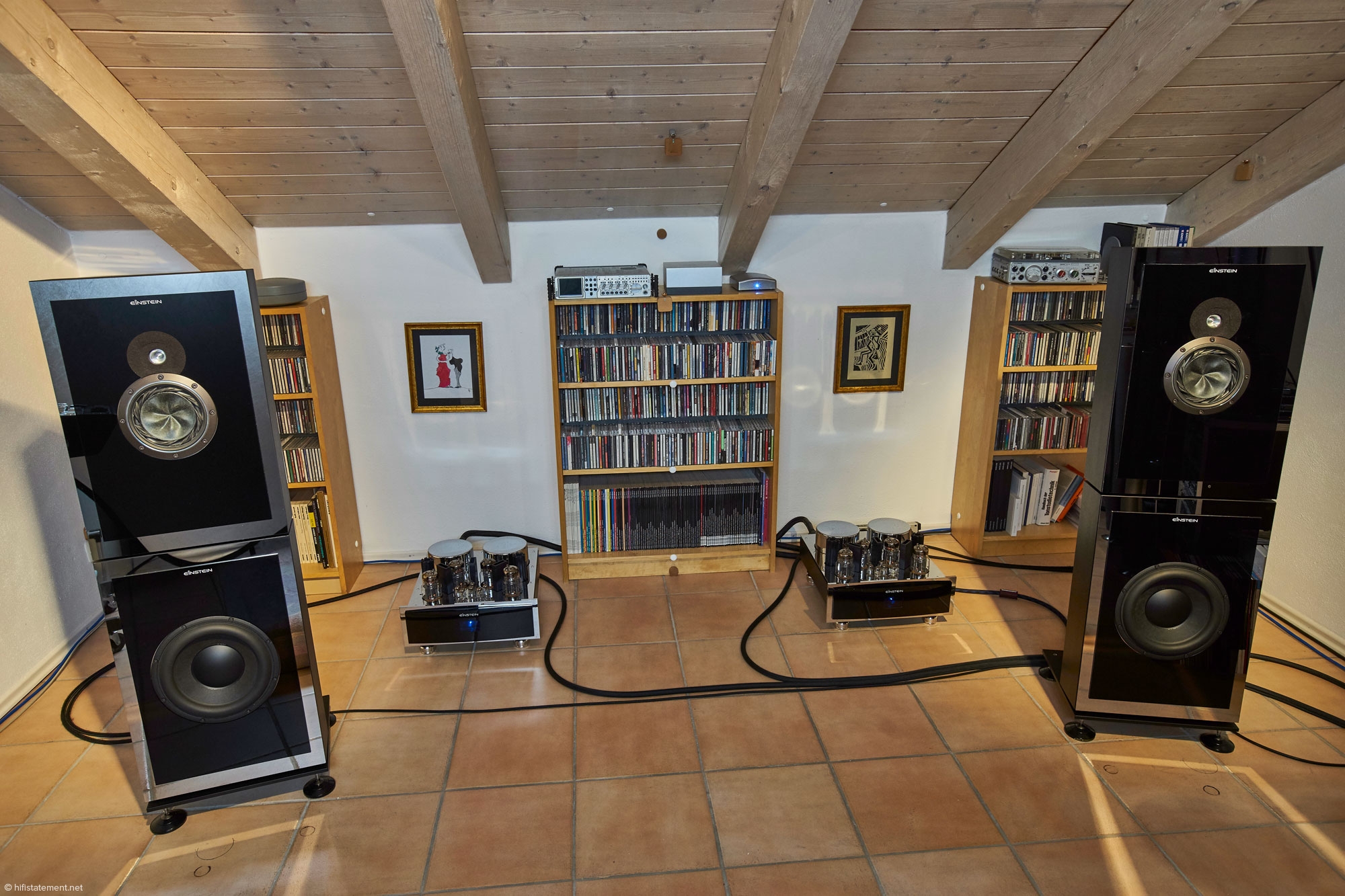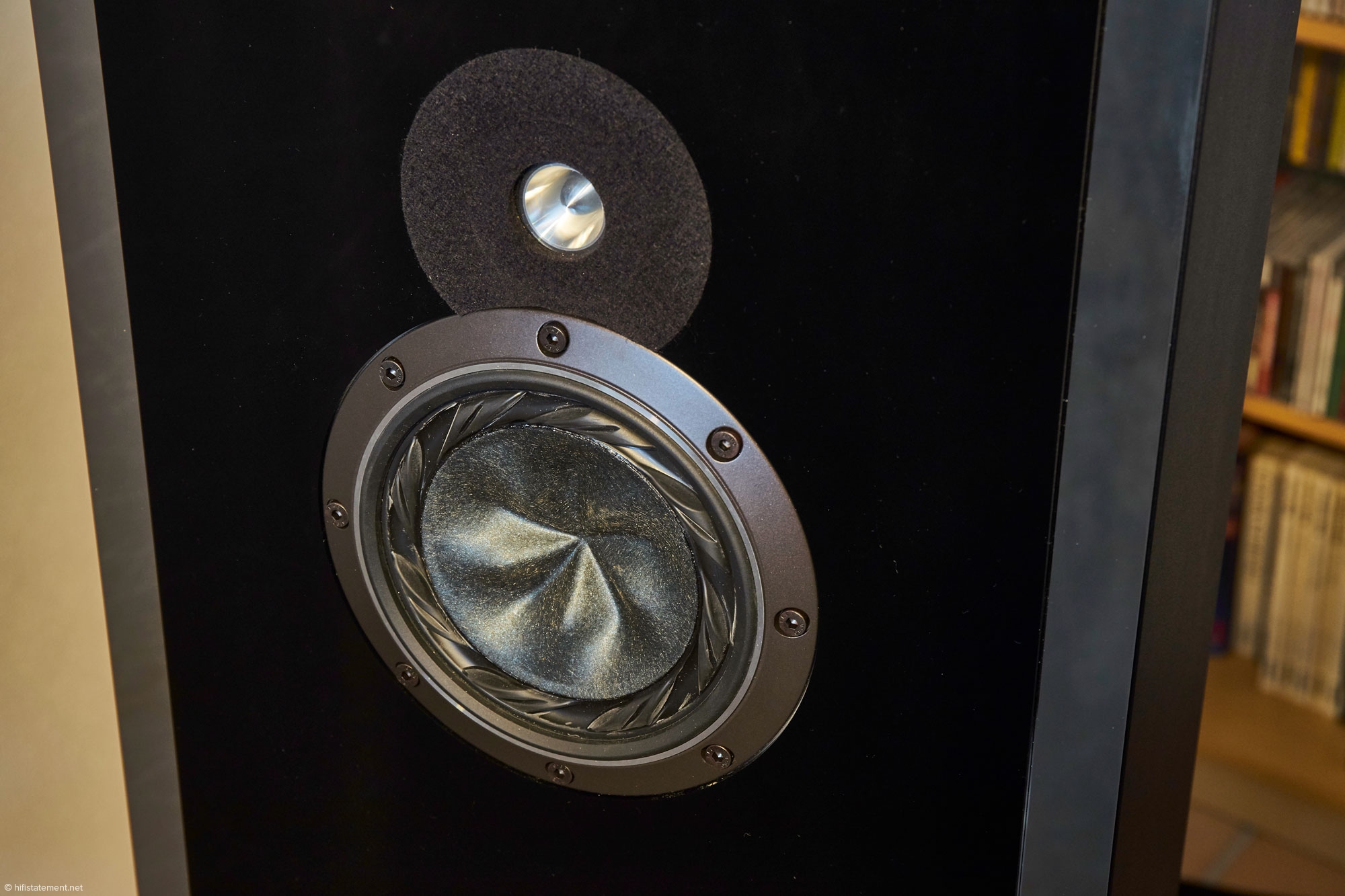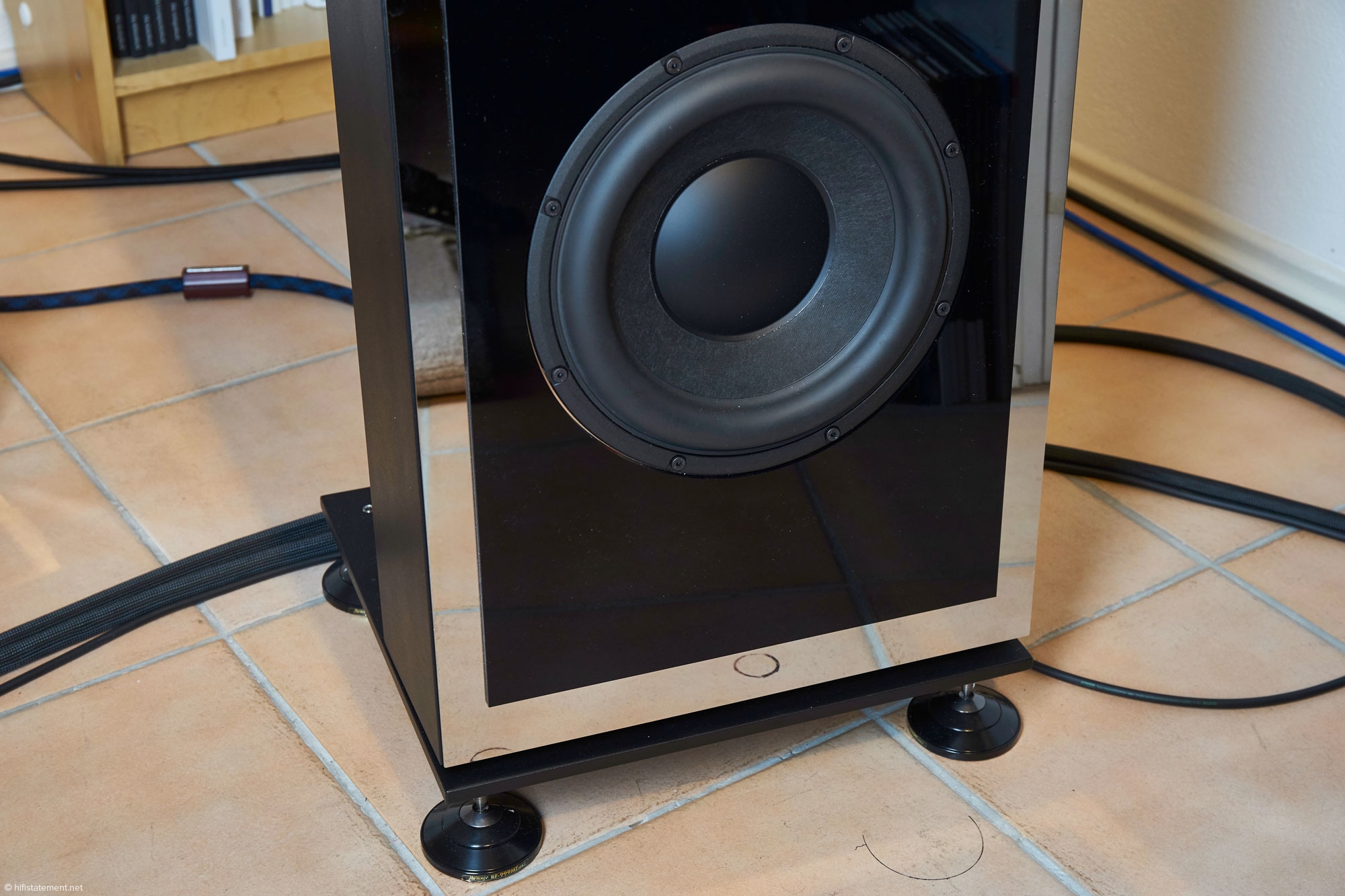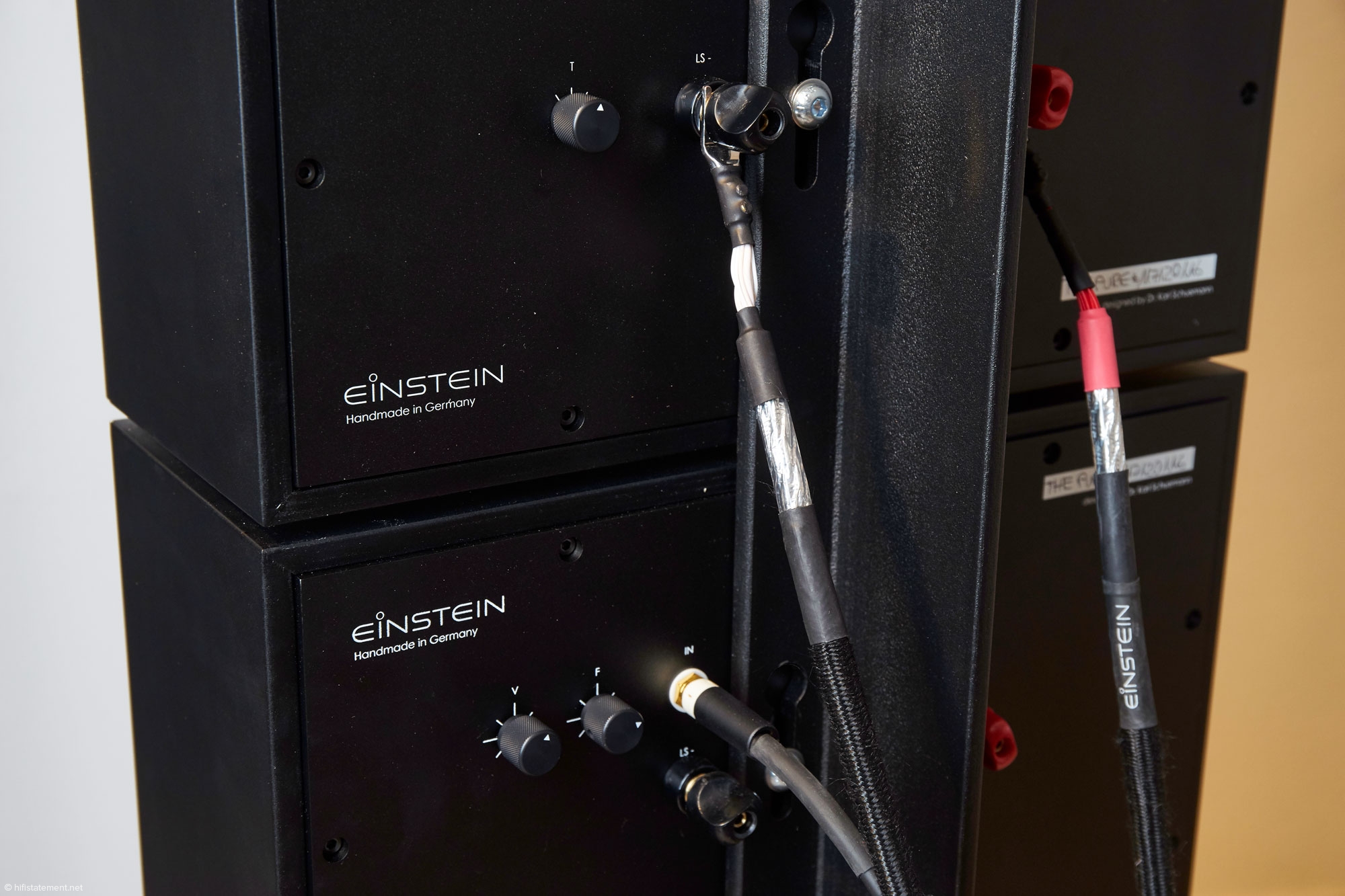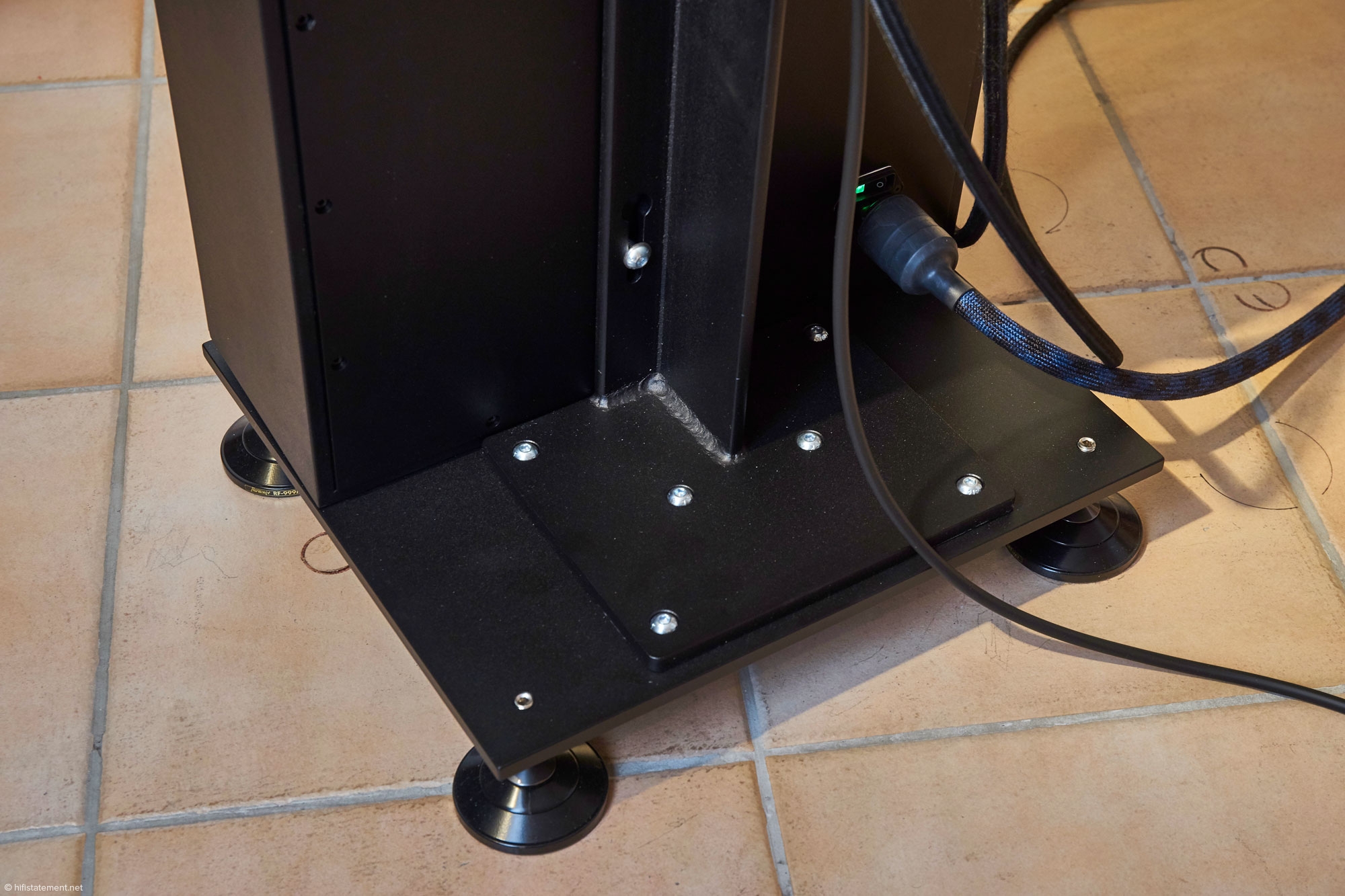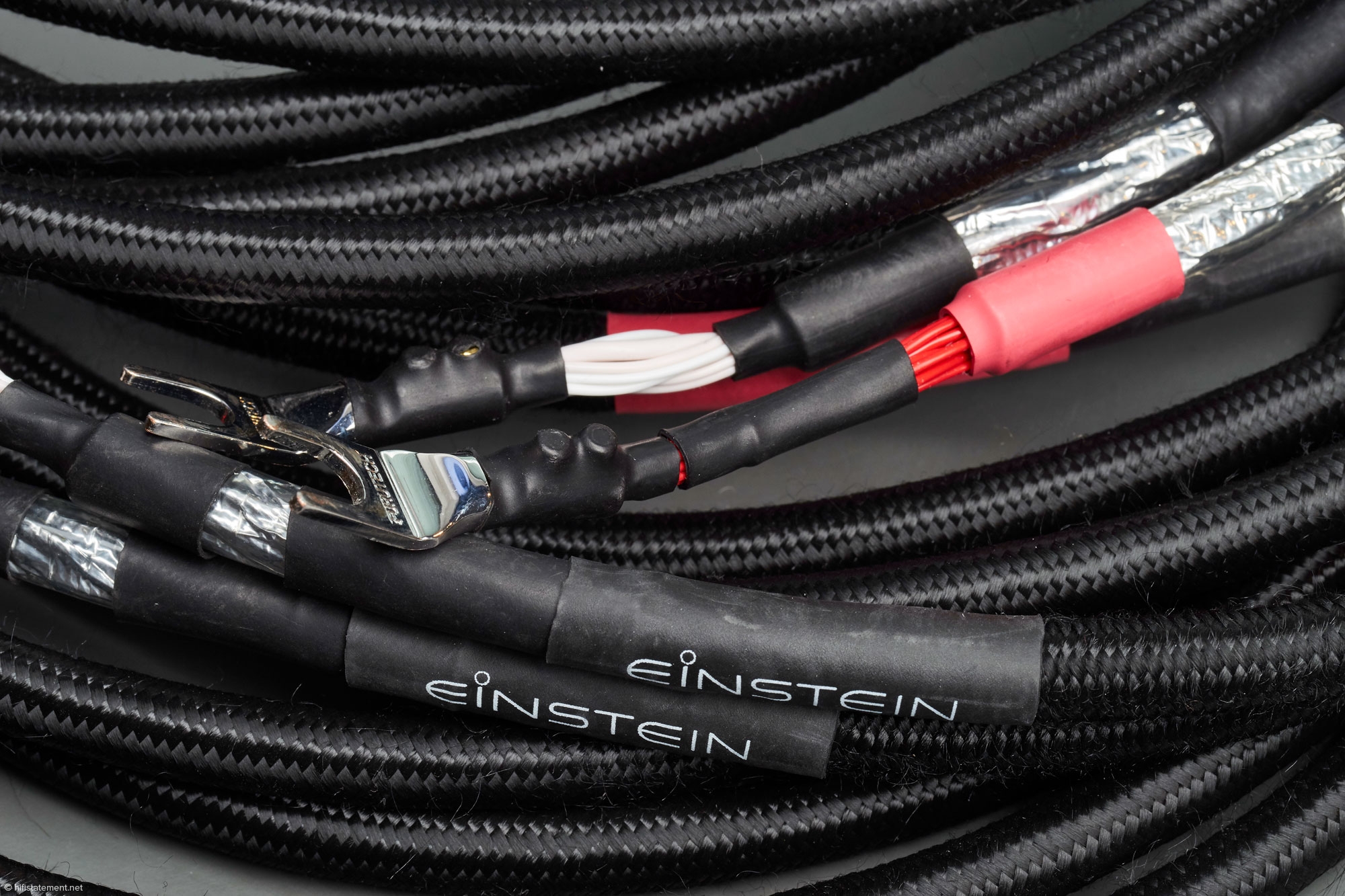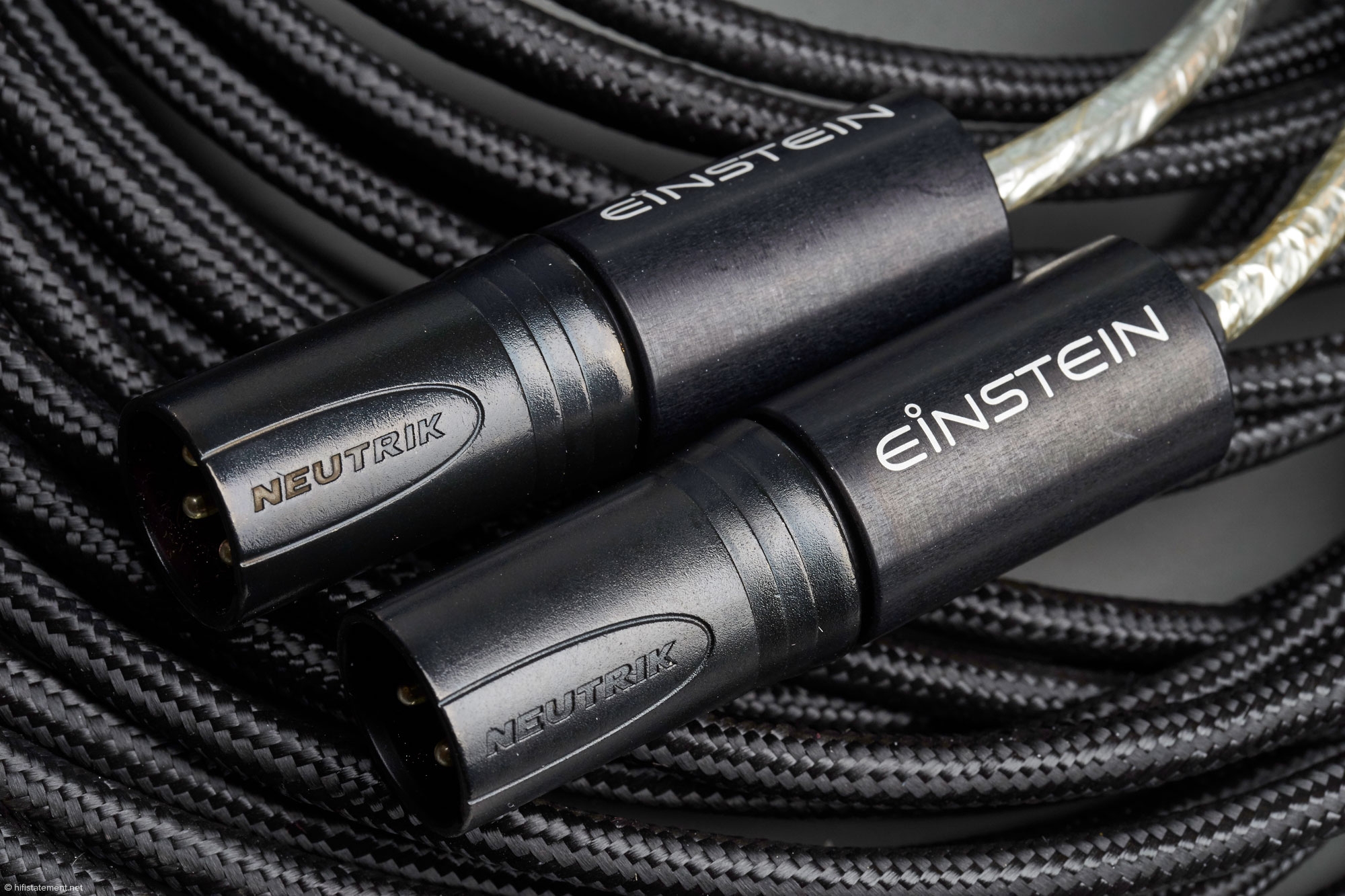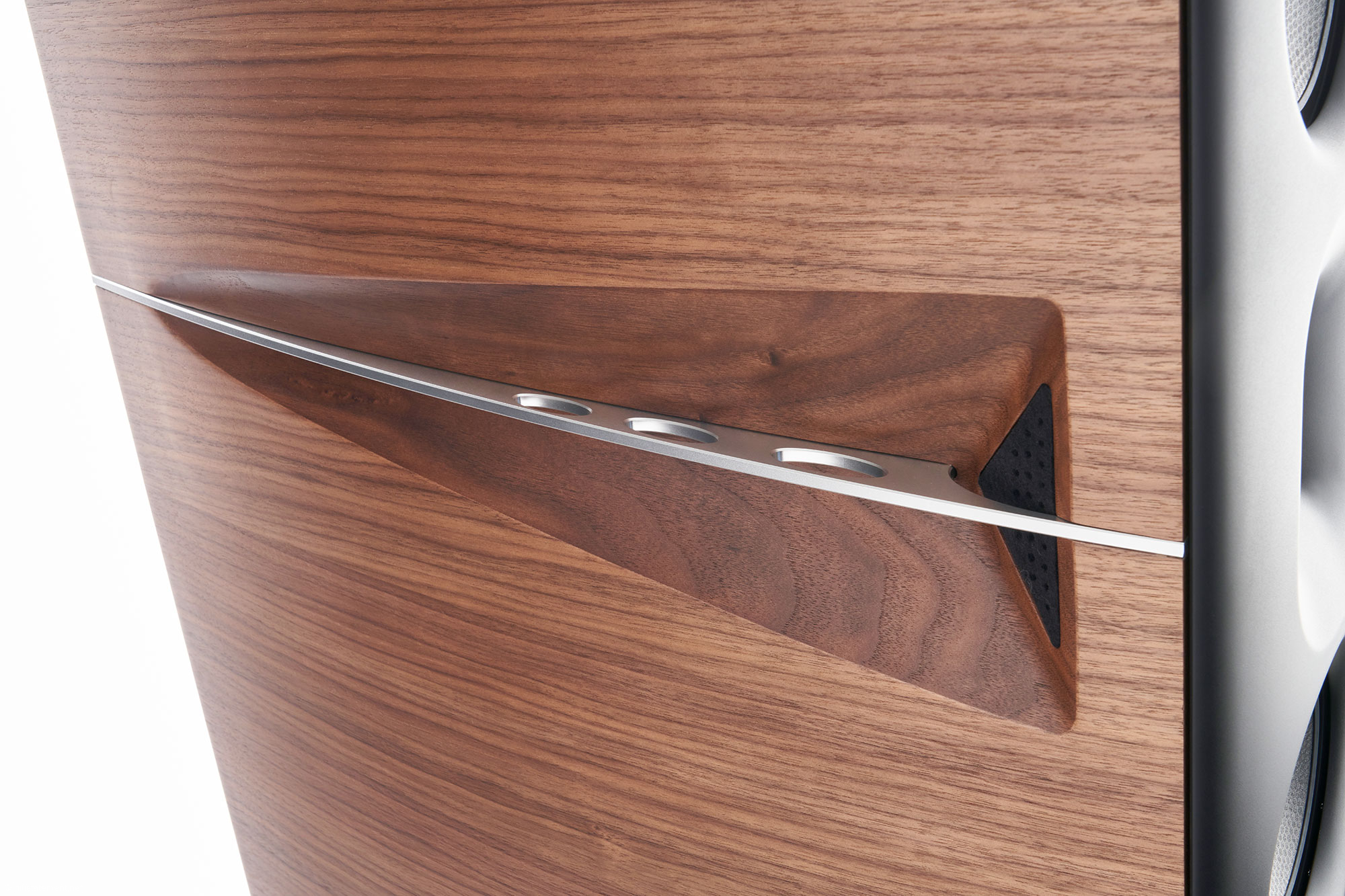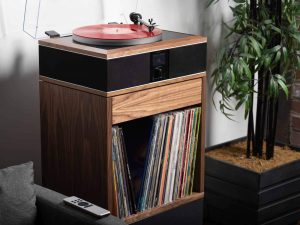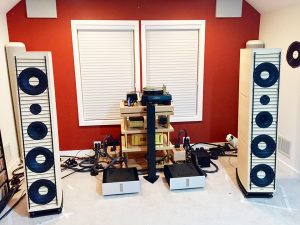With technical contributions by Jürgen Saile.
While working on Einstein's complete audio system with its laudable analogue source, in Part 1 of this review (which you can find HERE) we had traveled from cartridge to tone arm, and from there to phono stage and preamp. Following up on that we will now take care of power amps and the semi-active speaker system, The Pure - and, of course, the sound
Connecting the fully balanced preamp The Preamp and the OTL amplifiers The Silver Bullet, in whose circuit balancing plays a considerable role too, we of course use XLR cabling. But more specific details on the concept of an OTL amplifier in general can be explained to you by tube specialist Jürgen Saile, who said it much better than I can...
"Most tube amplifiers are designed using an output transformer that allows an impedance matching to today's low-impedance loudspeakers of four to eight ohms. However, due to winding capacitances, leakage inductances, etc., these transformers limit the bandwidth of the amplifier due to their construction. Sometimes the results will be more, sometimes less, according to the manufacturing efforts undertaken. In addition, this will, of course, entail considerable costs, when suitably designed.
But, what would happen if we simply omitted the output transformer? Julius Futterman came up with this idea as early as in the beginning of the 1930s, and presented the first commercial output transformer less (OTL) amplifier about 30 years later. This amplifier had two characteristic features: as the name implies, the output transformer was missing, and second, per channel several tubes were connected in parallel, usually eight to twelve. In later designs from other manufacturers, up to 20 tubes could be found, which then at the same time spares the central heating effect in winter. The purpose of this measure was, of course, to lower the output resistance, since the output transformer was missing.
The Silver Bullet: The mono amps come without an output transformer. Under the chrome covers the transformers of the two power supplies are concealed.
The direct coupling of the loudspeaker to the power tubes promised an improvement of the impulse response and a more accurate imaging of the waveform. Nevertheless, it's not that easy to use a tube without a transformer to drive an eight ohm load. I'm choosing my words every carefully here.
The standard design of an OTL circuit in the 1950s was the so-called single-ended push-pull circuit, which, however, had a drawback: it was unbalanced. The output signal was simultaneously generated from the cathode of the one tube and the anode of the other tube. In addition to some variants of this circuit, there is a simple modification that compensates for this asymmetry, and was launched by Electro Voice: the so-called Circlotron. With this modification, both tubes behave in the same manner. Using two 6C33C in parallel—as in The Silver Bullet—an output impedance of approximately 10 to 15 Ohm can be achieved; with several of them connected in parallel, it could be even further reduced.
Circlotron amplifiers always require a balanced input signal, and the drivers should be able to drive higher capacities, depending on how many tubes are connected in parallel. One disadvantage of this circuit is that two power supplies are required per channel, which then have to work in a floating manner, that is, without mass reference, otherwise the whole concept doesn't work. A reasonably linear power supply is a considerable cost factor in such a device, so there still will be no OTL bargain at Radio Shack in the future.
This Circlotron circuit has already been used by Rolf Weiler, the developing force at Einstein, in the predecessor of The Silver Bullet. Of course, this was not done without performing some changes. While in the original circuitry the loudspeakers are driven by the cathodes, here the anodes take over like in a single-ended amplifier. So, a certain similarity is to be found here. In addition, there is a slight over-all-feedback which somewhat reduces the output resistance a bit more. The amplifier thus has a damping factor of just under 100 at eight ohms, which is a sensational value for a tube amplifier.
Four 6C33C tubes provide 65 watts at eight ohms.
Unlike a solid-state amplifier, the output power drops when a lower impedance speaker is connected. Therefore, it's best that the speaker impedance should be eight ohms, or even more. Speakers with any drops down to an ohm in the impedance curve or similar bodgeries should be left to other playgrounds. What is also interesting is that the amplifier runs up to a bandwidth of three (!) Megahertz, which then again requires a Boucherot filter in the output. This is to prevent greater nonsense here.
The changes in the new Silver Bullet now do not refer to the circuitry, but concern more detailed solutions. I consider this to be quite a positive sign, because if a circuit is properly designed, then there is no "Mark II" version showing up half a year later. In the case of the Einstein monos, the stabilization of the power supplies was improved as well as the housing mechanically stabilized. After all, there has to be a reason for the 30 kilos of weight."
The Pure are immediately recognizable as Einstein components, due to the structure of its surround, the mid-woofer attracts a lot of attention.
So far, colleague Jürgen Saile. Let me just point out that the Silver Bullets have been lifted to a higher level by Harmonix BeauTone Million Maestro cable, and that in a double sense: physically and sonically. The Thunder cable directly connects the mid-range driver of the semi-active speaker system The Pure to the power tubes of the mono amps. The Fostex mid-woofer unit with a diameter of 15 centimeters works completely without crossover and is supported in the high frequencies by a Fostex ring radiator with aluminum horn. In the signal path a single capacitor determines the starting point of its operating frequency. In order to adjust the high frequency range to the listening room or the owner's taste respectively, Einstein offers the choice between three capacitors with different values to be selected by means of a rotary switch, of which, as already mentioned, only one capacitor is located in the signal path.
The puristic concept of the mid-high module is countered by an opulent bass unit: An IcePower amplifier with an output power of 700 watts serves to prompt a 26-centimeter woofer. A purely analogue crossover allows the frequency and the level to be adapted to the mid-woofer via a rotary control. The high power is required to allow for a sufficient cone travel of the woofer, which has to work on a very small volume. The small volume of the cabinet is intended to provide a colourful and fast bass and prevent the so-called "one note bass." As Volker Bohlmeier explains, the closed cabinet principle also allows the subwoofer to be precisely controlled below its resonance frequency, which makes the placement of The Pure in the listening room very unproblematic. In conjunction with the active bass control, the frequency response of The Pure goes down to 20Hz.
The Fostex mid-woofer operates in The Pure without a crossover. There is only one capacitor on way to the horn tweeter. This purism really can be heard!
If you ever have come across a semi-active multi-way speaker concept with lots of IcePower, then this isn't a coincidence. And you could also have known the name Pure, if you, for example, have taken a look at the web pages of AudioMachina. The concept for The Pure originates from AudioMachina owner and developer Dr. Karl Schuemann, whose top-of-the-range model Maestro GSE has been one of the finest speakers I have ever enjoyed in my listening room. Unlike the Maestro or Pure, Einstein's The Pure has a baffle that is significantly wider than the chassis mounted to it would require. Volker Bohlmeier notes that such a design is considerably less dependent on its placement in the room than a transducer with a minimalist baffle. In addition, the fairly large rectangular surfaces allow Annette Heiss to transfer Einstein's corporate design so perfectly to the loudspeakers that they wouldn't need to carry any logo at all to make The Pure a distinctive Einstein component. However convincing the design of the speakers may be, ultimately it's still Form-Follows-Function, and nothing else. The visually striking 1.2 mm thick stainless-steel plate is floatingly glued to the front cabinet panel made out of twelve millimeters thick aluminum and a black acrylic front. Thus the baffle features a mixture of three materials that mutually dampen themselves. The side walls and the bracings inside the modules with their Resonance-Controlling-Chamber construction are made of 40 millimeter thick multiplex boards. For the cabinet's back panel Annette Heiss and Karl Schuemann then again selected aluminum, this time with an impressive thickness of 12 millimeters. On request, The Pure can also be supplied with a natural wood front instead of the black acrylic panel.
The woofer operates on a very small volume and is boosted by 700 watts
Just as important as the mechanical stability of the cabinets is, of course, the rigidity of their mechanical fixation in the modular system. The modules are connected with four screws each to an eight millimeter thick T-beam. A spike integrated into the base plate of the stand is used for the vibration dissipation of the woofer module. The inclination of the steel support beam by six degrees together with the different installation depths of the drivers – the horn tweeter lies lower in the cabinet than the woofer and the mid-range driver—ensures a time-coherent sound radiation. The two modules and the stand of The Pure add up to impressive 100 kilos.
Annette Heiss and Volker Bohlmeier brought a brand-new pair of The Pure along to Gröbenzell, mounted the modules to each other, and placed the speakers to that position which has itself proven to be the most favourable in my listening room. The four easy-to-adjust spikes, which were inserted into the base plate of the stand, found contact to the floor via Harmonix RealFocus MK II. But, even after we had connected the initially forgotten RCA cables required for the control of the woofer modules to the preamp, The Pure didn't indulge our willing ears with euphony: Above all, the tweeter itself longed for an appropriate burn-in time. After about a week, during which I had music playing almost continuously during the day, and during which I by the way also discovered some long-forgotten records, the harmony between the single drivers finally got established. This then caused me to reduce the low-frequency energy a bit. The cut-off frequency I kept a good bit above the zero position, because this could compensate for the bass drop in my listening room almost perfectly. But regarding the level, in a somewhat exuberant mood I had turned the control knob a little too far to the right, on the one hand to set the correct balance with the dominant tweeter before starting the burn-in phase, and on the other hand, to yet again drown in an ocean of precise and well-defined low-frequency energy.
The treble is to be adjusted to room or taste in three stages. The controlling of the upper cut-off frequency and the level of the active woofer is continuously variable.
During the burn-in time the mid-woofer already made a good impression with its speed and openness. Even if I would rather avoid seeing a mutual dependency between sonic impressions and design features, the lack of any crossover components in front of the mid-woofer can be considered as a reason for the equally detailed and airy reproduction. Yet with all the openness on hand, the sound does not free itself from the cabinets as I have experienced it with other speakers, especially with the Kawero! And that's why I'm starting to change The Pure's positioning in the room a bit: Also for the Trenner & Friedl Isis, which for today's taste features a quite wide baffle as well. The usual speaker position in my listening room hadn't proved to be the ideal one. So I pulled The Pure a little bit further apart from each other, angle them only slightly in to my listening position, and even pushed them a few centimeters further from the back wall of the room. Suddenly the position of the speakers is hardly to be located anymore, the initially quite flat seeming sound stage significantly yielded much improved depth, and the sonic portrayal appears to be a lot more three-dimensional. Positively speaking, only one thing didn't change: the tremendous enthusiasm and spontaneity of The Pure.
Ironclad construction work from Bochum.
From that point onwards, Einstein's speaker system plays the way I would expect a first-class loudspeaker to perform in my listening room—and, it's about time to play some of my well-known records. Surprisingly, one of my test records finds its way onto the platter, which I have been listening to for far too many times—at least I thought of it that way—and which first of all leaves a lasting impression. That would be the "Buck Dance" of Dick Schory's Bang, Baa-Room And Harp, which I thought I knew by heart. But I have never been able to experience those simple bass lines in my listening room this colourful and melodious. Even with AudioMachina's Maestro GSE, I hadn't become aware of this particular skill before. But, please don't ask me why. However, it clearly turns out that the low-frequency rendering abilities of The Pure is somewhat a revelation for someone who—like myself—has a particular predilection for deep notes: Here, the bass range of the corresponding records appears not only vigorous and vital, but also enchants with melody and colour—and this, as already noted, does not deprive the low frequencies from their fundamental energy at all.
Jeremy Steig and Eddie Gomez' Music for Flute and Double Bass may be one of my long-time favourite records, but it has been quite unsuitable and therefore much too good for testing purposes. And, there are not only the two instruments mentioned in the album title to be heard, but, due to studio technologies, several of them at the same time. Adding to this are such effects as Octave Divider, Ring Modulator, Mutron III or Echoplex that join the scene. Combined with a placement of the instruments in the stereo-panorama that, speaking in a friendly way, needs some getting used to, it emerges as a peculiarly floating, not very much comprehensive, and gripping sonic image, which I easily can let aside because of the wonderful music. The Einstein chain, of course, hasn't got the ability to assign the instruments any other place, but lets them perform in an earthed and substantial manner. The effects no longer seem to be a mere self-purpose, but is now shown to be better integrated into the musical message. The record no longer sounds artificial, just a touch more lively and genuine. How nice it is, and that even after 30 years, to discover new facets on one of those LPs you would take to the famous lonesome island!
Of course, Einstein also has its own loudspeaker cable in their portfolio. The Thunder doesn't come with a directional specification.
The fact that an audio system co-developed by Volker Bohlmeier surely doesn't cause any—rhythmically speaking—headache, I presuppose. This very much is confirmed by Muddy Waters' "Good Morning Little School Girl," taken from the Discovery Sound reissue of Folk Singer, and which the Einstein owner also had a hand in producing. Although the cautious remastering did not prevent Willie Dixons' somewhat suboptimally recorded bass to be still lacking a bit of control, thanks to The Pure it now is sounding with more colour and supporting the irresistible groove of the tune. How the mid-range driver translates the dynamics of the voice and the two guitars leads to mere pleasure. But the chain does not only perform the blues brilliantly: Keith Jarrett's "God Bless The Child" also makes sure that the drive of the trio doesn't leave the listener unmoved: It is simply impossible for the listener to remain impassively seated in light of this rhythm, while Gary Peacock's expressive bass lines then put the icing on the cake.
After that I picked the "Polka" from the Classic Records reissue of the RCA classic The Age Of Gold, where my attention should actually lay on the spatial imaging. Right from the start, however, I am fascinated by the lighthearted vibrancy and rousing rhythm. The colourfulness of the creaking oboe and the airiness of the recording room do not surprise as well: They simply meet the high-level expectations, which originate on the previous experiences with The Pure. However, the imaginary stage is not quite as deep as with the LumenWhite or the Kawero!. With these the percussive metal instruments shimmer even a bit more colourfully. The Pure certainly would behave the same way, if the frequency roll-off of the mid-range driver was minimally smoothed with a few crossover components in its upper range, but not without depriving the loudspeaker from its exhilarating liveliness and its distinct live character. And that, in fact, would be unforgivable.
The signal cable is named The Flash and, like all Einstein cables, it features a carefully elaborated shielding.
Instead of executing further audiophile nit-picking, I rather prefer to dive into the low-frequency pressure of Jonas Hellborg's Elegant Punk. When a loudspeaker matches all hi-fi criteria with a clearly balanced and harmonious sonic performance at the highest level, while its rhythmic abilities, its tonal colours in the low-frequencies, and its enthusiasm still appear to be a bit more pronounced than the other virtues, then there is probably no record that extracts a higher benefit from that than the solo album of this exceptional Swedish bassist. Any further description of what was heard would lead to unrestrained effusiveness. So, enough is enough.
Statement
A tonally and aesthetically coherent performing chain can only be brought to life if top-level developers contribute their particular solutions to the project from their areas of expertise under competent, but also music-inspired, supervision. Einstein has achieved this goal. This chain embodies the finest in high-end both in sound and design. At this level, you can expect state-of-the-art performances in all hi-fi disciplines and have them delivered as well. Even more, there is a tremendous enthusiasm and a sense of proximity to the live experience that directly attracts the listener's world of emotions.
Simply magnificent!
LISTENING EQUIPMENT
- Turntable: Brinkmann LaGrange with tube power supply
- Tonearm: AMG 12JT Turbo
- Cartridges: Lyra Etna, Einstein The Pickup
- Phono preamp: Einstein The Turntable's Choice (balanced)
- NAS: Melco HA-N1ZH60, WDMyCloud
- Streaming bridge: Auralic Aries Femto with SBooster BOTW P&P Eco
- D/A converter: Chord DAVE
- Preamp: Einstein The Preamp
- Power amp: Ayon Epsilon with KT150 tubes, Einstein The Poweramp
- Loudspeakers: Kaiser Acoustics Kawero! Classic
- Cables: HMS Gran Finale Jubilee, Swiss Cables Reference Plus, Goebel High End Lacorde, Habst Ultra III, Audioquest Diamond and Carbon, Cardas Audio Clear Network
- Accessories: PS Audio Power Regenerator P5, Clearaudio Matrix, Sun Leiste, Audioplan Powerstar, HMS wall sockets, Acapella Bases, Acoustic System Feet and Resonators, Artesania Audio Esoteryc, Harmonix Real Focus and Room Tuning Disks, Audio Exklusiv Silentplugs
MANUFACTURER'S SPECIFICATIONS
Einstein The Pick-Up
- Principle: Moving Coil
- Stylus shape: Shibata
- Frequency response: 20 - 30kHz ±3dB
- Output voltage: 0,4mV at 5cm/sek
- Channel balance: < 1dB at 1kHz
- Recommended tracking force: 2,3g ± 0,1g
- Coil impedance: 12Ω
- Dynamic compliance: 13µm/µN
- Tracking ability at 315 Hz: 80µm at 2,2g
- Vertical tracking angle: 20º
- Weight: 13g
- Price: 4.400 Euros
Einstein The Tonearm
- Length: 9 inch
- Effective length: 232mm
- Offset angle: 22,5º
- Effective mass: 18,5g
- Mounting holes: 34mm
- Mounting distance: 217mm
- Tonearm tube: stainless steel (outside), Aluminum (inside)
- Special features: stepless height adjustment via level, detachable headshell with precise locking system
- Price: 6.200 Euros
Einstein The Turntable's Choice
- Gain: 68dB (2500 times)
- Signal-to-noise ratio: >=80 dBTHD:<0,03%
- RIAA: passive
- Input impedance: adaptable
- Output impedance: 50Ω
- Output voltage: 10V
- Weight: 7,0 kg
- Price: 9.000 Euros
Einstein The Preamp
- Signal-to-noise ratio: >95dB
- THD: < 0,03%
- Output voltage: 2,5V/100Ω
- Output impedance: 50Ω
- Frequency range: 7Hz to 250kHz
- Dimensions (W/H/D): 430/170/410mm
- Weight: 20kg
- Price: 18.000 Euros
Einstein The Silver Bullet OTL
- Signal-to-noise ratio: >98dB
- Distortion at 1 kHz: <0,02%
- Output power: 80W/12Ω, 65W/8Ω, 45W/4Ω
- Damping factor: 95/8ΩWeight: 30kg / mono amp
- Dimensions (H/W/D): 24/43/49 cm
- Price per pair: 48.000 Euros
Einstein The Pure
- Principle: semi-active three-way speaker system
- Frequency response: 18Hz-30kHz
- Sensitivity: 89dB/8Ω
- Drivers: 26cm woofer, 15cm midrange, 2cm super tweeter
- Crossover: Subwoofer 18Hz-150Hz with active equalization, Midrange driver without any crossover, Horn tweeter with 6dB connection, switchable level control with four-stage IL precision switch
- Subwoofer: active, closed with integrated 700W ICE power amp, analogue crossover technology with adjustable frequency range and adaptable volume level for the woofer
- Dimensions (H/W/D): 120/40/15cm, 125 cm high incl. stand
- Weight (incl. stand): 100kg / each
- Recommended amplifier power: 15-200WPC/8Ω
- Price per pair: 44.000 Euro
EINSTEIN Audio Components GmbH
Prinz Regent Straße 50-6044795
Bochum, Germany
+49 234 9731512






